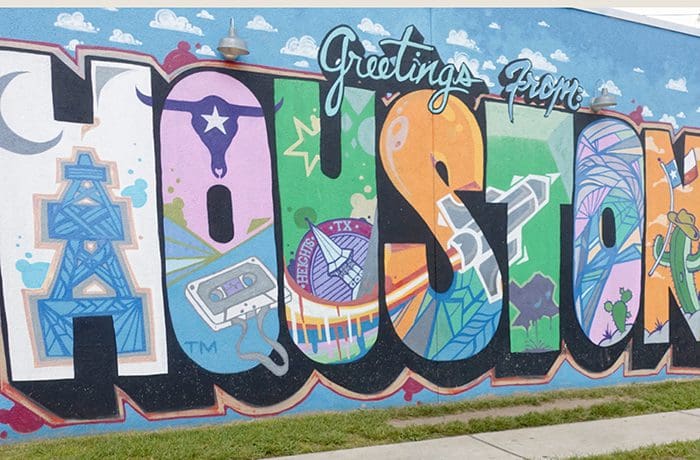
In the last 2 weeks after the murder of George Floyd by police in Minneapolis, we have witnessed massive protests, demonstrations, marches, and rallies that have taken place across the nation in virtually every major city in the country. These protests are aimed at raising awareness about the injustices local police commit against black people in their communities and injustice towards African Americans in general. It seems that the tragic and inhumane episode in Minneapolis sparked a “tipping point” of intolerance at which people can no longer stand by and allow such awful events to happen.
Additionally, and concurrently, we saw in almost all the cities where the protests took place that they were accompanied by violence, rioting, arson, looting, physical injuries, and murders of both police and ordinary citizens. Many major cities have suffered untold physical and financial damage to both small and large businesses, to public property, to public buildings and monuments, and to infrastructure. This is unfortunate because much of the message has become blurred by the violence and threat to ordinary citizens.
There are several theories and rumors floating around about why these demonstrations and protests have turned so violent and destructive. Many say that the agitation served as a fire starter for the explosive violence and chaos which came from the outside and was organized by groups such as Antifa, extreme liberalist groups, and White Supremacist groups. Reports in many of these cities where the destruction was most devastating say that many of the most violent and antagonistic actors were not from the respective communities and that they came from other states, sent in and funded by outside organizations and factions ,determined to cause chaos and destruction in these cities in an effort to dismantle the structures, agencies, and services that preserve safety, law and order, and a sense of normalcy for the cities and their citizens.
In fact, there are many reports in cities across the country where pallets of bricks and rocks were strategically delivered and placed in areas close to where the marches were to take place. That suggests that these materials were being supplied to cause destruction and havoc. There’s lots of conspiracy theories and hypotheses about who, why, and how all of this background activity took place, but regardless of what you believe about this, the fact of the matter is that the result was very destructive and harmful, with rioting, looting, burning, and injury to people, property, and streets in America. As this chaos unfolded it was easily observable that in some cities it was becoming “out of control”, it was ostensibly being “allowed to happen”, and very little was being done to stop the rioting, looting, and destruction occurring in these major cities. In the face of all this pandemonium, there was at least one major city where this level of shattering damage did not really erupt: Houston, Texas, the 4th largest city in the nation.
George Floyd was from Houston. He grew up here, he participated in the community, high school sports, got himself into trouble here, but at the end of the day he was recognized as being from Houston. So there was always the possibility of trouble erupting here, but it didn’t. Why?
As most people know, most of the large cities in the United States are run by Democrat mayors. In the case of most of the cities where the destruction has happened, there is a Democrat governor in place for that state. Texas is an exception to this with our Republican Governor Greg Abbott, although our mayor, Sylvester Turner, is a Democrat. He is different in the way he handled the threat of havoc – instead of clamping down, resisting, or avoiding hearing the message, he embraced it fully.
Houston’s Chief of Police, Art Acevedo, is also a different kind of police chief. If you spend a lot of time out in public attending Texans games, Astros games, or Rockets games, there’s a good chance you’ll run into our Chief of Police. He’s very visible, approachable, and friendly. I’ve met Art several times and he’s true to the phrase “you couldn’t meet a nicer person.” You also get the sense that his friendly style is in no way a sign of weakness, because his strength and resolve are evident as well. When all of this erupted last week, true to form Art Acevedo went out on the streets. He talked to the people. He made it clear that he was not only supportive of their protests, but that he was going to march with them. And he did. He literally marched in the street with his fellow citizens as part of the protest rally. So did Mayor Turner. The two most visible public figures in our city not only endorsed and supported the First Amendment right to protest, they embraced it, got behind it, and let the citizens here know that they were with them.
But our local leaders do explain it alone. Again, the question is: why didn’t it erupt in Houston? As the awareness, concern, and fear grew about what was happening across our nation, many people from other cities asked me, “how’s it going in Houston?” And my response was, “There’s virtually nothing like you’re seeing elsewhere happening here. Yes, there are protests and marches, but they’re not violent and destructive. No burning buildings, yes a few flare ups, but almost nothing in comparison to what you’re seeing elsewhere.” In fact, the only scenes of destruction and looting took place at a Forever 21 store in the Galleria (Houston’s major shopping mall), where the glass windows were shattered, and at a downtown Verizon store, where the glass was smashed and the store looted. That and a few damaged police cars are the extent of the damage in Houston.
My friends around the country would then ask why I thought this was the case. One guy asked, “What is in the water there that has people act differently?”
My response was that there are three reasons things. The first is, people here are part of what I’ll call the ‘Texas culture’, which is very mannerly, polite and respectful. People say ‘sir’ and ‘ma’am’ here in addition to ‘y’all’ – they really do. At the heart of that culture is a respect for each other, each other’s property, and each other’s professions, no matter what profession. Now here’s my take on Houston: people didn’t come here for the weather and they didn’t come here for the view. I personally lived in a condo on the beach in Northern California, where I could watch the sun come up over the ocean off my balcony, feel the sea breeze and smell the salty sea air. I joined a consulting firm and was asked to live here for 1 to 2 years as a partner – that was in 2001. I’ve never left, and I probably never will. Since people didn’t come here for the weather and the view, they came here to work and make a living, to take care of their families, and to afford themselves a decent lifestyle. And people work very hard to have that here. Having worked for it, they certainly wouldn’t do something to destroy it, because they know what it took to get it there in the first place. In conclusion, people have respect for each other and each other’s property.
The second reason, I said, is that there is an implicit respect for the law here. Sure, we have crime because it is the fourth largest city in the country – but not the kind of crime nor the level of violent crime that you see in a city like Chicago and other large cities. People here don’t have tolerance for criminals and criminal behavior. The laws are tough, and if you buy the theory that people only respond to force and coercion, it leans more that way than letting people run amok. There are consequences for breaking the law and they are enforced quickly and decisively. People back up the police here and, by and large, they trust the police to do the right thing; and generally, they do.
The third thing is that the Texas gun laws allow people to buy, own, and use guns. Not just rifles, but handguns and the notorious assault rifles. That leaves the possibility that anyone you encounter might be a gun owner and, more importantly, that they could be in possession of a gun. Committing a violent crime could have serious consequences depending on when and against whom you commit the crime. That summarizes for me the question “what’s in the water?” It is those three things combined: 1) manners and mutual respect, 2) respect for the law, and 3) call it the vigilante effect – the possibility of ordinary civilians enforcing the law as the situation arises.
Now, compare the lack of violence, the actions of Houston’s leaders, and the culture in our city with what happened in New York, Los Angeles, and Chicago, their leaders, and their culture. Big difference. Big gap. In those cities, the people were “talked at” instead of “talked with” by their city leaders. Policies were issued and dictums delivered, orders were given. That, for me, explains how come in the fourth largest city in the country there was virtually no problem. I’m not saying that Houston is perfect, we’ve got lots of work to do. But I can tell you this: the rule of law is respected here; people are treated with respect and dignity by public officials; and people treat each other with respect and dignity in our communities. I think the cities in the United States could learn a great lesson by studying what’s happening here compared to what happened in their city.
I’m proud of our city. Well done, Houston.
Peace.
Kevin Cullen is President of Leadera Consulting Group, specializing in producing breakthrough business results. If you want more on this conversation or the firm, contact us at Leadera Consulting Group.
Kevin Cullen: kcullen@leaderacg.com, cc: acook@leaderacg.com
Read More
| Insights From Kevin | July 11, 2017 |
Seventy percent (70%) of all strategic program initiatives fail. That is a brutal fact that is well documented and proved. Having worked with hundreds of organizations, we have discovered that much of the problem occurs in the way people work together ~ the way they communicate to and from each other; the way they support one another. The level of integrity that’s present amongst the team and in the project, as well as the way in which they each regard one another, are all elements on which the success of an initiative depends.
We have developed five essential practices for building High-Performance Teams:
1 ~ Authentic Listening
This is way easier said than done as most people think they are good listeners ~ not true. Authentic listening requires the ability to get in another’s world; not just their words, but the place from which they are speaking and understanding what they intend to say. Two good habits to develop this skill are: 1) give the speaker your undivided attention and 2) repeat back to the person what you heard and what you think their intention is in what they said. This gives the speaker an opportunity to confirm or correct your feedback.
2 ~ Talking Straight
This means getting things up on the table that are difficult or uncomfortable to address ~ and to do it in such a way that people are left feeling respected, honored, and empowered. At the same time, it’s essential to get the issue (the “elephant in the room”) dealt with head on. It’s a fine line between confronting something that is difficult to talk about and doing so with the sensitivity it requires ~ this takes courage and grace at the same time.
3 ~ Working as a Team
Watch any professional sports team that is working successfully and this becomes apparent. It requires a “pit crew” mentality. Each person on the team backs up, supports, and empowers the others. Their win belongs to each of them. “Your win is my win. Your loss is my loss.” They work together in such a way that extraordinary results take place. They back each other up and they support one another in difficult situations and circumstances. No one gets toppled by little things. Nothing gets in the way.
4 ~ Honoring Your Word
If this one doesn’t happen, you can forget the rest. This is simply working towards doing what you say you will do. It’s doing what you know to do, what’s expected, and what you know is right. And everybody knows how to do this ~ the question is, do they do it? Fundamental to this is cleaning it up when you don’t do what you said you would do. Clean it up immediately and move on.
5 ~ Being Complete
The practice of being complete means that you don’t step over the trash. If something needs to be said, dealt with, or cleared up, it gets dealt with right away. The team understands that when you operate on top of issues, resentments, and things unsaid, everything comes to a grinding halt. This one’s about getting things complete so they get clear, and there is a level of appreciation maintained by developing the practices of doing so. In sports you see the guys in the dugout or on the court “high-fiving” each other with each little win throughout the game. This is no different than validating success.
Summary
By having these five practices in place you can build a high-performance team. We’ve seen that when teams have these five components working actively, the likelihood of success turns around dramatically from 70% likely to fail to 85% likely to succeed. We have a proven track record for successful project implementation when these five principles are utilized and present.
Kevin Cullen is President of Leadera Consulting Group, specializing in producing breakthrough business results. If you want more on this conversation or the firm, contact us at Leadera Consulting Group.
Kevin Cullen: kcullen@leaderacg.com, cc: acook@leaderacg.com
Read More
| Insights From Kevin | June 13, 2019 |
Scarcity ~ it’s an affliction; each of us suffers from it in some way. It’s a relationship with life that things are scarce. It is pervasive. It seems that everywhere we look we find that there’s not enough of something. We wake up and start our day thinking, “I didn’t get enough sleep, there’s too much work, I don’t have enough time, I’m not smart enough, I don’t have enough money, I’m not thin enough”. By the end of the day when we finally lay our head on our pillow, we say to ourselves, “I didn’t get enough done today”.
The Buddha said, “The source of all suffering is a lie.” Consider that these pronouncements that we unconsciously whisper to ourselves are the exact kind of lies to which The Buddha is referring. This approach to life (which we all seem to have) is embedded in our thinking and began when we were very young. It seems that we all go through our lives longing for more or better of whatever it is that we feel would make us happy. It’s both subtle and insidious. We constantly compare ourselves to others and we think that their circumstances are “better” than our circumstances and therefore they must have a better life, leaving us wanting more. Our conclusion that more is better is not true ~ not even a little bit. Things and circumstances don’t make people happy. Happiness is a function of accepting what is, accepting what you have, and being grateful for it. That’s not so easy to keep in front of us because in so much of our lives we relate to our circumstances as if they determine the quality of our lives.
Recently I had a chance to reconnect and work with an old friend and former colleague, Lynne Twist. Lynne is an amazing woman. She has spent most of her life working on large scale projects that are aimed at altering and impacting vital situations in the world such as hunger, starvation (as in third world countries), and the environment as a fundraiser for major charities. She has raised over 50 million dollars*. In the process of her work she’s had some incredible insights and discovered some important things about both abundance and scarcity. Lynne has written a book called The Soul of Money ~ Transforming Your Relationship with Money and Life. In it, she reveals what she calls the “Lie of Scarcity,” in which she cites 3 toxic myths ~ that “there is not enough”, “more is better”, and that “that’s just the way that it is”.
“There is not enough”
The first myth is “There is not enough” (I’m not enough, it’s not enough, we’re going to run out, someone’s going to get left out so I have to make sure that I have enough). This creates what Lynne calls a “Deficit Mentality”. She illustrates that by making the point that the USA is the richest and most successful country in the world and, at the same time, it has the largest debt of any nation, a debt so large that it’s almost un-confrontable.
“More is better”
The second myth is “More is Better”, which leads to “I’ve got to have more.” So, the solution is to accumulate. Whether it be money, things, experiences, friends, it must be true that the more, the better with the hope that if I get enough, I’ll be satisfied. And to make the point, Lynne raises the fact that one of the fastest growing industries in the US is storage. That’s right ~ we are now building and renting little boxes and homes for all the stuff we’ve accumulated and will, in short, forget that we have. We are insatiable about getting more. As she was speaking about this, I realized that I had spent $3K to build a storage shed next to my garage so I could house all the stuff that we’re not currently using. I’m not going to lie; it’s filled to the brim and I have no idea what’s in it and I’m absolutely certain I’m not going use any of it. It would be wise of me to empty out the storage unit and give the stuff away to someone who would use it.
“That’s just the way that it is”
The third myth she said is “That’s just the way that it is” (i.e. there’s not enough and more is better). And therefore, since there’s nothing we can do about it, the solution is to keep acquiring and accumulating ~ but never really being satisfied or fulfilled.
Lynne then shared this remarkable thing ~ way back in the mid-70’s she attended an event where Buckminster Fuller (aka Bucky) was speaking. Bucky is recognized as a scientist, inventor, and a world-renowned thinker (he literally invented the electric car in the 1940’s). And at this event Fuller said,
Humanity has recently passed a critical threshold; and that threshold allows humanity to do so much more with so much less. There’s enough for everyone everywhere to have a healthy productive life.
Buckminster Fuller
He said that it would take humanity probably 50 years to come to that realization and to actualize it. I hope to God Bucky was right because 40 some years later it does not look like we have gotten the message. We live in a world rooted in scarcity and at the same time it is possible to live in a world of sufficiency. For that to become reality, humanity would need to make the shift from a “you OR me” world to a “you AND me” world and, let’s face it, that begins with you and me. This will require a kind of courage and boldness, because we would have to see our “enoughness”. This would lead to:
- Sufficiency,
- Wholeness and
- Infinite capacity.
Lynne went on to say that “sufficiency is precise”. It means that we are met by the universe with exactly what we need, when we need it. It’s not an amount. It’s just what you need. The never-ending chase for more is simply not satisfying because no matter what, we see a lack and will need more. True abundance is enough. She continued by saying “what you appreciate, appreciates.” And what that looks like in practice is 1) gratitude, 2) thankfulness, and 3) thanksgiving.
I make a daily practice of being grateful for what I have. I’m certainly not rich, nor am I poor, but I do have enough, more than enough. And there are plenty of people who do not. I made a commitment that by the end of this year I will have gotten rid of anything that, if not being used, worn, or enjoyed, I would make it available to someone who will make use of it. I was sharing this with a group of people and I told them that I chose to give up alcohol 14 years ago, yet I have a wine refrigerator that contains about 100 bottles of premium red wines. And I don’t drink red wine and my wife only drinks white wine. So, when a guest comes over we open a bottle of what’s now a finely-aged wine. They are almost always very hesitant to allow us to open it until they understand that we have it for the very purpose of sharing it. We’re not saving it.
At a very practical level the next day after meeting with Lynne, I was sharing what Lynne had said with a colleague. As he listened, he was flabbergasted because he could see that the very thing I was talking about was pervasive in his life as well. He shared with me that he has three different storage facilities around the country. One in NYC, one in Rochester, NY, and one in San Francisco. His storage bill for these three facilities is $8,500 a year. And there is nothing in any of those containers that he’s ever going to use again in his lifetime, but good God the thought of throwing it out and getting rid of his junk has up until now been un-confrontable. I asked him why was keeping the stuff. He said he didn’t know what else to do. He’d paid a lot of money for some of it and some of it was his father’s (who is deceased) and he thought he’s just supposed to keep it all. He joked about having someone go and open up the units with a sign saying “HELP YOURSELF!”. I bet him the units would be empty within a day of posting the sign, because people know that people can’t get enough, and more is better. Scarcity ~ it’s an affliction.
Sufficiency isn’t two steps up from poverty or one step short of abundance. It isn’t a measure of barely enough or more than enough. Sufficiency isn’t an amount at all. It is an experience, a context we generate, a declaration, a knowing that there is enough, and that we are enough.
Brene Brown
*About Lynne Twist:
“For more than 40 years, Lynne Twist has been a recognized global visionary committed to alleviating poverty, ending world hunger and supporting social justice and environmental sustainability. From working with Mother Teresa in Calcutta to the refugee camps in Ethiopia and the threatened rainforests of the Amazon, as well as guiding the philanthropy of some of the world’s wealthiest families, Lynne’s on-the-groundwork has brought her a deep understanding of people’s relationship with money. Her breadth of knowledge and experience has led her to profound insights about the social tapestry of the world and the historical landscape of the times we are living in.”
Kevin Cullen is President of Leadera Consulting Group, specializing in producing breakthrough business results. If you want more on this conversation or the firm, contact us at Leadera Consulting Group.
Kevin Cullen: kcullen@leaderacg.com, cc: acook@leaderacg.com
Read More
| Insights From Kevin | April 4, 2018 |
Most leaders got into the position they’re in by being competent managers, making things happen, solving problems, and getting the trains to run on time. However, simply managing the present is insufficient when one is a leader because a leader’s job really is to focus on the future and create a vision for the future that inspires their people to make it happen. Job #1 of a leader is to have a vision that is compelling, inspiring and achievable. Job #2 is to share that vision with their constituents in such a way that their people see that that future has their name on it, and that they not only want to be a part of it, but will also own it in such a way that it comes to fruition. People want to make a difference. They want to have their lives matter; quoting George Bernard Shaw:
“This is the true joy in life, the being used for a purpose recognized by yourself as a mighty one; the being thoroughly worn out before you are thrown on the scrap heap; the being a force of Nature instead of a feverish selfish little clod of ailments and grievances complaining that the world will not devote itself to making you happy.”
Creating the vision to engage others is tricky, because the vision needs to be articulated in such a way that people can hear it, identify with it, and want to participate in it. There are many examples of such leaders in the last decade ~ for example Steve Jobs at Apple declared there would be “an Apple on every desk”, Jeff Bezos at Amazon, whose originating mantra was “Get Big Fast”, and Elon Musk at Tesla is known for his vision of “Anywhere on earth in under one hour.”
Each of them has demonstrated the importance of this vital aspect of leadership by stepping way out into the future, creating a vision for their company for what’s possible, and then going after it with gangbusters. Part of this brilliance has to do with the way they are able to presence this vision for their employees such that it’s almost tangible and certainly doable. By doing this a leader is ensured that people in their company become a part of implementing the vision. Most people know that 70% of strategic initiatives fail in corporations. Getting your people to buy into the vision gives you a huge advantage for success.
How do they do this?
They do it by walking people through the vision ~ what it will take, how it will unfold, and underlining the benefits and rewards. At Leadera Consulting we have a 9-point, step-by-step formula for this skill set in which we train leaders how to deliver a powerful leadership message focusing on the future. When leaders design a message using these 9 points (in order) they find that their people are able to connect with the vision, have it become tangible and want to participate in delivering it.
The 9 points are:
- Background connection
- The vision
- Strategy
- Implications
- Actions needed
- Sense of urgency
- Benefits and rewards
- Hardball issues
- Appreciation and acknowledgement
It is important that the message be designed and delivered in this order. We have found that this particular order is consistent with the way people think. For more details on this step-by-step process please follow this link to our website ~ https://leaderacg.com/2018/03/28/the-power-of-your-leadership-message/
The bottom line is that successful leaders love to inspire their people. Getting your people to “buy in” to your message is what allows for the message to be fulfilled. When done well, inspiration leads others into action. But keep in mind that message and that inspiration has no shelf life on its own. A successful leader will build regular and consistent reminders into the workplace that reinforce the message. Inspiration must be shored up with actions. Consider designing how to get your people “on board” and how to keep them there.
Kevin Cullen is President of Leadera Consulting Group, specializing in producing breakthrough business results. If you want more on this conversation or the firm, contact us at Leadera Consulting Group.
Kevin Cullen: kcullen@leaderacg.com, cc: acook@leaderacg.com
Read More
| Insights From Kevin | April 5, 2019 |
Part of a leader’s job is to reach people with a powerful connection and ability to inspire them. Most leaders know the importance of this, but the really great ones know how to do it effectively and they make it their business to do so consistently. Emailing, texting, memos, and missives do not reach and inspire people. Those methods of communication simply transfer data and information, give orders and instructions, or make requests. They don’t reach into a person’s heart and soul and they don’t move people to action. Any good leader will tell you that one of the things that is essential in leading others successfully is to be able to use language in such a way that it touches and inspires people. That happens in speaking, in a conversation, and virtually every time it’s done well, it’s done in person ~ in face-to-face dialogue. Good story telling is an important skillset for any leader to have.
A few years back I worked with a CEO of a Fortune 500 company. He shared with me that the most significant thing he learned about the public’s perception of his company was that it depended on his ability to tell a good story. During the quarterly review calls with the analysts he needed to be able to tell a story that they would believe in. He said that the results and circumstances in the background, coupled with a good story that he believed in, would get people to view the future favorably and invest. He said the trick is to get them to buy the story because when they do, the perceived value will go up and so will the stock price. Executives and leaders need to develop this ability if they intend to engage and inspire their audience. It is a skill, an art, and it can be developed.
Unfortunately, most of us know that story telling is a dying art and skill set ~ mainly due to technology. It’s no secret that people have stopped having conversations and have begun to direct their attention to a little screen that they hold in their hands and seem to be captured by. Years ago, I was on a vacation in Ireland and visited the Aran Islands off the west coast. I took a quick jaunt on an ass-cart ride and learned about the old and treasured art of story-telling. The ass-cart is a small cart or carriage pulled by donkeys. The salty, local man driving the cart told about the story-telling that used to be such a strong part of that culture. If you went into anyone’s home, you’d hear amazing stories of leprechauns, fairies, and the lore of life from the past. People would tell stories, passing down the history of the families and the local culture. Life was handed down from the past. But that doesn’t happen so much anymore. When TV came into people’s homes, people stopped talking to each other. Story-telling is becoming a lost art form, slowly disappearing in our culture and society with the influx of technology, the internet, TV, and broadcast media. People no longer need dialogue to entertain. Stories are disappearing. The art of telling stories is almost gone.
How do you develop good story-telling? There are essentially 5 elements of a story.
1. Have a Central Theme
Have a central theme that runs throughout the entire story ~ what is the point you want to make? Have that theme grow as the story is told and weave it throughout the conversation.
2. Draw on Your Own Experience
Share real life experiences that make the point. People don’t want to know how great you are ~ they want to see how great, or human, they are. They want to know how this applies to them, or in other words, they want to see how great they are.
3. Paint a Picture
Give them details that allow them to call up a picture in their own mind. Show, don’t tell. You want the audience to see themselves in your story. Embellishing the story with your experiences makes the story more vivid and real for people.
4. Evoke Wonder
Engage people in the telling of the story. You want them wondering, “where is this going? How is it going to turn out?” Your audience will feel they have learned it for themselves. It becomes a personalized conversation.
5. Keep It Simple
The story should demonstrate one conflict, one lesson ~ it is one story.
Story telling is an invaluable tool for any leader, and while some have a natural ability, it is a skill that can be developed with a little bit of focus and work. It’s our experience that any good leader must find a way to inspire and move others through story telling.
Kevin Cullen is President of Leadera Consulting Group, specializing in producing breakthrough business results. If you want more on this conversation or the firm, contact us at Leadera Consulting Group.
Kevin Cullen: kcullen@leaderacg.com, cc: acook@leaderacg.com
Read More